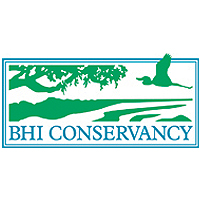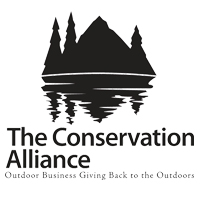Heat Training and Conditioning for the Badwater Ultramarathon
Three time finisher
I am a long-time physician in the high desert area, living and practicing in Lone Pine, California. It is at the foot of Mt. Whitney and at the threshold of Death Valley. I have treated cases of every imaginable medical circumstance including heat exhaustion and heat stroke (including disseminated intravascular coagulation). Since 1990 I have been involved in the annual Badwater Ultramarathon (formerly the Hi-Tec Badwater 146).
In 1991 my claim to fame happened during the race. About a week before 14 of us started at Badwater, Death Valley, there was known to be a trekker missing who had attempted to traverse Death Valley east to west 10 miles and then return. During the race, I was approaching Lone Pine some 122 miles later and saw the coroner traveling in the direction of Death Valley. By the time I had made it to Whitney Portals at 135 miles, I got word that he wanted me to do an autopsy. I obliged and then re-entered the course to complete the event to the top of Whitney at 146 miles. I am the only one of which I am aware who has ever performed an autopsy during a race. Besides that, I used a water-filled casket (body removal tank) for immersing myself in to cool down during the race. I am also the only one I have heard of to successfully get in and out of a casket before successfully finishing a race.
In terms of heat training and experience, I began to increase my exposure to the heat in 1990 when I went out on the Badwater course to see and help several friends who were in the race. While training to participate in 1991, I became acquainted with Richard Benyo and Tom Crawford of “Death Valley 300” fame; they had done the round trip from “Fire to Ice to Fire.” As a result of this association and having done the autopsy, there was a touching ceremony at Badwater on 07-04-1992 where I was dubbed the “Mayor of Badwater” and my wife, Denise, the “First Lady of Badwater.”
I completed the Race in 1991, 1992 and 1993 and did not finish on the next two attempts in 1994 and 1996. My failure in 1994, after 40 miles, was because I did not start the race hydrated well enough and that I stopped manufacturing urine. I gave myself four liters of IV’s as I laid on my casket in the U-Haul before I started putting out urine. I felt that, if I were to continue, I would wind up on the renal dialysis ward. Because of the extra heat in 1996 and the resulting fatigue that existed, I pulled myself at 50 miles. I could have continued but I went ahead to support my wife and free up my crew for her as I would have finished beyond the 60-hour time limit. My wife finished successfully in 1994, 1996, and 1999.
One advantage I have in regard to heat training and adaptation is that I live in the high desert in the Eastern Sierra. In Lone Pine, it gets to above 100 degrees F in the summer and it is very dry with less than 10% humidity. It is usually 20 degrees hotter in Death Valley no matter what time of day or what day of the year it is. All I have to do is go eastward and hang around in the heat (in dark clothes) and do some light exercise.
There is some very good scientific information about heat acclimatization that is very informative and can be found in “Marathon and Beyond” in the July/August 1997 issue: “Into the Valley of Death” by Richard Benyo and “Beating the Heat” by David E. Martin, PhD. Another valuable piece is in the “Encyclopedia of Sports Medicine and Science” on “Heat Acclimatization” by Lawrence E. Armstrong, PhD. My information below is more of a “by the seat of the pants” approach.
“How long do you need to train in hot conditions to acclimate?”
My answer is as long as possible, but, practically, about three weeks. Try to spend as much time above 100 degrees F as possible and that means traveling to the low deserts of Southern California or the eastern desert areas such as Panamint Valley and Death Valley. It is necessary to spend time outdoors in these areas and just trying to relax while getting used to the heat. The training can be eased into. Of great importance is to have the potential crew members along also. The event being trained for can almost be more difficult and hazardous for them than for the performer. Most athletes cannot afford the time and cost of doing all of this, unfortunately.
“When acclimating, how long and how hard should you exercise each day?”
Long is more important than hard. Start easy and then work up. I like Walt Stack’s creed of “start slowly and then taper off!” Calculate the distance being covered and the time limit imposed, then go from there according to your capabilities. For the Badwater Ultramarathon, 20-minute miles will cover the 135-mile course from Badwater to Whitney Portals in 45 hours. One can buckle in 48 hours. For this 135-mile Race, most of it is flat and I tried to do 15-minute miles for these 70 miles. I treated the 19 downhill-miles as flat miles at the same pace to save the legs. The uphill 18 miles from Stovepipe Wells Village to the top of Townes Pass and the 15 miles from Panamint Valley to the Darwin Flats I tried to do at a 20-minute-per-mile pace. For the steeper 13 miles from Lone Pine to the Portals, I tried to do at a 30-minute per-mile pace. The 11 miles up the Whitney trail I allowed a 1-mile-per-hour pace. So, setting a pace for the terrain of the anticipated race is necessary. This is not possible for a continuous race lasting more than 48 hours. The intensity and duration of training can be adjusted upwards for each additional day of training, but allow a few rest-days or, at least, a few rest-hours for you compulsive people. I would say try to do a mild level of exercise for about 8 to 10 hours each day. The intensity can be adjusted upwards to a moderate level later. It is virtually impossible and essentially inadvisable to train at an intense level in these conditions. Try to gauge how many hours or days it will take to get through the anticipated event and heat and practice accordingly.
“Is passive acclimatization possible?”
It certainly is and this is mostly what I do. Wear dark clothes while in the heat. Don’t use air-conditioning. You can even roll up the windows of the vehicle and turn on the heater. My exercise base has usually been 1-2 hours of exercise a day every day in my calculated fitness range. [This is three to six times what is needed for general and basic health]. I have always been at the back-of-the pack, or, as I often announce, in the top 98%. In getting ready for this race, I like to go out to the desert and just kick back and do some hiking as well as strolling on the dry lake beds and over the sand dunes. I take a camera and a micro cassette recorder as well as some techno-nerd items. Try to have fun and visit with other desert rats. Be sure to write up your story even if you “fail.” Pass on what you learn. With progressive heat adaptation, I have found that I don’t seem to sweat as much and my skin doesn’t seem to taste as salty, even if I am not exercising at the time. Fluid and electrolyte and calorie replacement are extremely important in these conditions for you and your crew. These are separate issues that could be covered later. Passive conditioning can get you by better than vigorous exercise. Decide what it is that you are trying to accomplish and set some goals.
“Can one simulate hot conditions at home?”
Yes, and this has been done using a sauna and with maybe adding some minimal exercise. Get a medical checkup before starting all of the above activities. Another way to do it is wear extra (dark) clothing as mentioned above while exercising in desert-like conditions. Wear something that traps the heat for a while. Again, don’t use air conditioning and roll up the windows and, if this doesn’t do it, turn on the heater. I have done these things and when it is 120 degrees I don’t even notice the blast from the heater. It does help the vehicle to run cooler, too. All of these things are useful, but the most important is to get in the right frame of mind about what is going to be done. You do have to get your skin, stomach and bladder through all of this too. I have had the advantage of living where I do and traveling frequently to the desert. I have practiced as a physician here since 1963 and have observed what can happen out here. Be careful!










